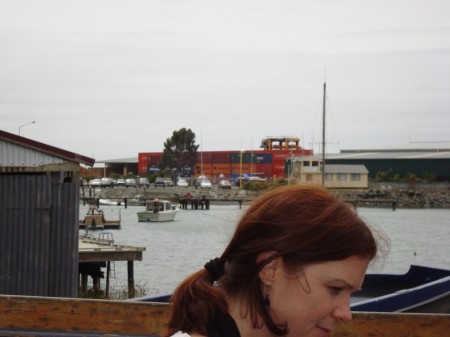 Yarrow Herbal Hair Conditioner To Stimulate Hair Growth
Yarrow Herbal Hair Conditioner To Stimulate Hair Growth
This is a very good multi-purpose conditioner which is recommended for hair growth, because it nourishes the hair follicles, as well as helping to make the hair shiny and glossy. It is especially good for removing excess oil from the hair. The recipe is shown at the bottom of this article, which is mainly about wild medicinal herbs such as yarrow, and how we should be protecting them.
Yarrow is the herbal ingredient for this hair conditioner. Yarrow is one of our valuable healing medicinal herbs which used to be common in grassland. Unfortunately, the makers of herbicides have seen to it that all these wonderful herbs used in medicines for thousands of years, are being eradicated from all our grasslands and wild places. You will have to hunt for yarrow now, if you live in New Zealand, where agricultural chemicals are used excessively all over our beautiful country, in the cities, in the parks, and even in the bush. No remote, way-side place is safe anymore from the herbicides and pesticides of the grim reaper.
Hardly any foreign plants and trees are allowed to exist here now, and the Auckland City Council appears to have a policy of ‘NO COLOUR – NO IMPORTED TREES OR FLOWERS’ in its plantings around the city and its big bus centres. In these places, you will see just bland greens everywhere, smallish trees and shrubs, with large areas of strange brown or green grasses growing in groups, which nature never intended anyway. It seems that these gardens are designed to subdue and depress us.
After all the trouble taken by our ancestors to bring beautiful, colourful, and useful medicinal herbs, plants and trees here, now many of these specimens are almost non-existent. The absence of colour is the dominating force around many parts of Auckland, and in the newly created bus centres, which have no flowering trees at all, such as magnolias, or camelias, or flame trees, and certainly no lovely cottage garden plants such as we used to see in abundance around our city gardens. Colourful trees and flowering plants are all being punished because they require more work than these self-maintaining wiry green and brown plants. These things are symbolic of the New Zealand-Auckland psyche now, as perpetuated by the current government: Thriftiness and harshness over beauty and delicacy and generosity. Note: To be fair, though, these ghastly mono-plantings were begun by the Auckland City Council, and are not the responsibility of the government.
If we want our medicinal plants to survive, we have to start cultivating them again. If everybody kept just a dozen potted medicinal herbs, letting valuable weeds such as dandelion, yarrow, plantain, dock, and pennyroyal have their place in our potted gardens, then there would be no danger of losing them. To plant these things in your garden in certain areas, to let them flourish there, would be even better, but, sadly, not everybody can own their own house and garden these days. Try to plant a magnolia, or a wild rose, somewhere around the place. Tell other people to plant some of our old garden plants and trees, as well as some of those wild medicinal herbs, called weeds.
Back to the Recipe For Yarrow Herbal Conditioner:
Make a brew of strong yarrow tea. Use a cupful of chopped yarrow, put into a small saucepan. Add one and a half cups of boiling water. Infuse on the stove, on a low heat, for 5 minutes. It should not boil, but just stay warm.
Now let the yarrow tea cool. When it has cooled, mix half a cup of yarrow tea with half a cup of rum, and 3 egg yolks. Do not use the white of the egg for your Yarrow herbal Conditioner, but put those in the fridge to use elsewhere.
Beat all three ingredients together.
Now wash your hair with your regular soap or shampoo. I preferably use only sunlight soap instead of shampoo, because it does not contain harmful colourants, perfumes, and other chemicals.
Dry the hair and apply your home made herbal conditioner to the scalp and the hair. Make sure the hair is evenly covered, and massage plenty into the scalp to nourish the hair follicles and promote circulation to the scalp. This helps hair growth. Leave the conditioner on the hair for 20 minutes, and then rinse off in warm water. Make sure the water is not too hot, or else the egg yolk will coagulate.
The home made conditioner can be used once or twice a week to nourish the scalp, put a shine on the hair, and stimulate hair growth.
You can use the same formula for making another herbal remedy for the hair, such as nettles, or comfrey, or rosemary. These are all silica-rich herbs which are beneficial for hair growth and the general health of the hair. Just follow the recipe as given above, but make your herbal tea with any of these healthful hair herbs. Drinking a cup of weak comfrey tea, or nettle tea, each day will help hair growth. Make the Comfrey tea with only one leaf chopped up. Infuse in 3 cups of hot water for 5 minutes and drink one cup of this.
